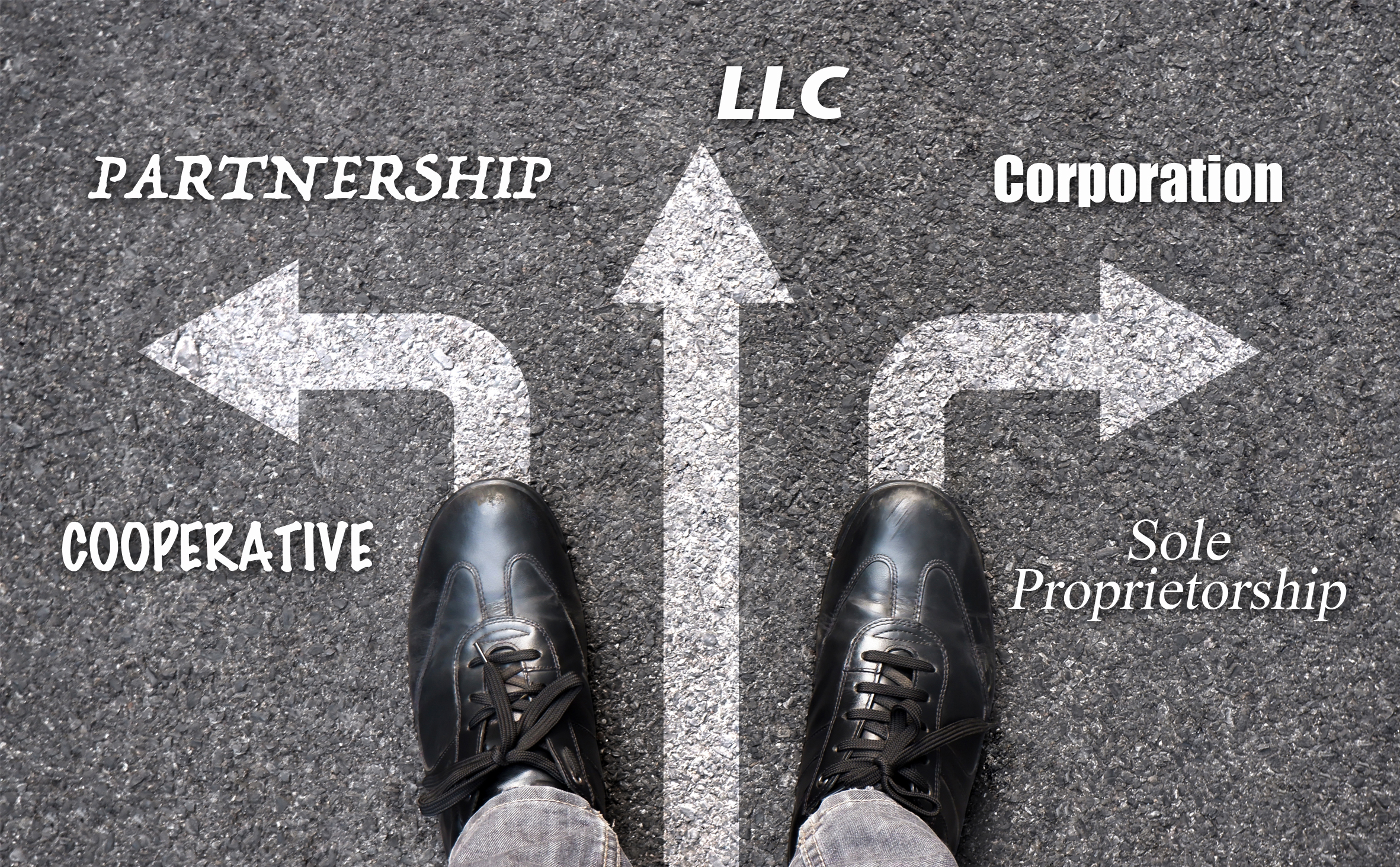April 10, 2024

Choosing the Right Business Structure
Selecting the right business structure stands as a pivotal decision for every entrepreneur, deeply affecting your venture’s legal status, tax responsibilities, operational agility, and capacity for growth. The far-reaching impact of this decision necessitates a thorough examination of each business structure’s unique features and consequences.
Let’s delve into a comprehensive exploration of the available options, along with valuable information to guide you through this critical process effectively.
Types of Business Entities
Choosing a business structure is akin to setting the rules of engagement for your company. It defines the legal and financial framework within which you operate. This choice determines how you will report your business income, how much tax you will pay, and your personal liability in the business. Here’s a review of common business structures:
Sole Proprietorship: The simplest and most straightforward business form, a sole proprietorship, is owned and operated by a single individual. It’s an extension of the owner’s financial and legal identity—profits and losses are reported directly on the owner’s personal tax return, making tax preparation relatively simple. However, this simplicity comes with the drawback of unlimited personal liability for the business’s debts and obligations.
Partnership: Partnerships are formed when two or more individuals or entities agree to conduct business together, sharing in the profits, losses, and responsibilities. This category includes:
- General Partnerships (GPs): Where all partners share in the operations of the business and in the liability for the business’s debts.
- Limited Partnerships (LPs): Include both general and limited partners, where limited partners typically invest capital but do not partake in management decisions, limiting their liability to their investment.
- Limited Liability Partnerships (LLPs) and Limited Liability Limited Partnerships (LLLPs): These structures offer personal liability protection for the partners’ personal assets from the business’s debts, with some variation between the two on the extent of liability and operational control.
Limited Liability Company (LLC): An LLC is a flexible hybrid structure that provides the personal liability protection of a corporation with the tax efficiencies of a partnership. Owners, or “members,” can opt for the business to be taxed as a pass-through entity or as a corporation, providing significant flexibility in managing tax liabilities.
S Corporation (S Corp): An S Corp is a special designation that avoids double taxation by allowing income, losses, and credits to pass through to shareholders’ personal tax returns. It combines the legal protection of a corporation with the tax advantages of a smaller entity. However, S Corps have strict eligibility criteria, including limits on the number and type of shareholders.
C Corporation (C Corp): A C corporation is a separate legal entity that offers the strongest level of liability protection to its owners (shareholders) but at the cost of double taxation—profits are taxed at the corporate level, and any dividends distributed to shareholders are taxed again on their personal tax returns. This structure is well-suited to businesses that plan to raise capital through public stock offerings or have international shareholders.
Key Considerations
Selecting a business structure that balances flexibility with stability is crucial for fostering sustained growth and success. This decision demands careful consideration of key factors that significantly impact your business’s legal, financial, and operational framework. Considerations include:
Liability: Protecting your personal assets from business-related liabilities is crucial. Business structures like LLCs, S corporations, and C corporations provide a shield for your personal assets against business debts and legal issues, minimizing personal financial risk.
Taxes: Your business structure determines both how you will be taxed on business income and the complexity of your tax reporting. Sole proprietorships, partnerships, and S corporations benefit from pass-through taxation, which might simplify tax affairs and potentially lower overall taxes. C corporations are taxed independently from their owners, offering potential tax planning benefits but also imposing double taxation.
Investment Needs: The ability to raise capital is significantly influenced by your business structure. C corporations are especially geared towards attracting external investors and venture capital due to their capacity to issue various classes of stock and the legal distinction between the company and its shareholders. If attracting external funding is part of your business strategy, choosing a structure that aligns with investor expectations and preferences is key.
Administrative Complexity: The administrative burden associated with maintaining your business structure varies widely. Corporations require a high level of compliance, including regular filings, maintaining corporate minutes, and holding shareholder meetings, which can be resource-intensive. On the other hand, structures like sole proprietorships and LLCs generally have fewer regulatory obligations and simpler operational requirements, appealing to those seeking operational efficiency and lower overhead.
Future Flexibility: Considering the long-term vision for your business and its capacity to adapt to changes is essential when selecting a business structure. Some structures, like sole proprietorships, offer limited scope for growth and adaptation, while LLCs and corporations are designed to accommodate changes in ownership, expansion, and even succession planning.
FAQs for Further Clarity
Can I switch business structures later?
Yes, but it can be complex and costly. Ideally, choose a structure that serves your long-term vision to avoid unnecessary transitions.
How does structure choice impact hiring?
Your business structure affects legal liabilities associated with employees, potential benefits packages, and administrative responsibilities for tax withholdings.
How does structure choice affect funding opportunities?
Investor appeal and loan eligibility vary by structure. C Corps are typically most attractive to investors due to stock issuance capabilities, while sole proprietorships may need to rely more on personal funding sources.
What structure offers the best tax advantages?
Tax advantages are highly individualized. While pass-through taxation of sole proprietorships, partnerships, and S Corps avoids double taxation, C Corps offer benefits at the corporate tax level. Personalized advice from a tax professional is invaluable here.
What’s Next: Laying the Foundation
The right business structure sets the stage for your venture’s success, balancing legal protection, tax efficiency, operational control, and growth potential. Though the decision is complex, thorough consideration of each structure’s implications will illuminate the path that best aligns with your business goals and personal preferences.
As you embark on this decision-making process, remember, you’re not navigating it alone. Contact Wilke CPAs & Advisors for tailored insights on choosing a business structure that can help your venture thrive and grow.
